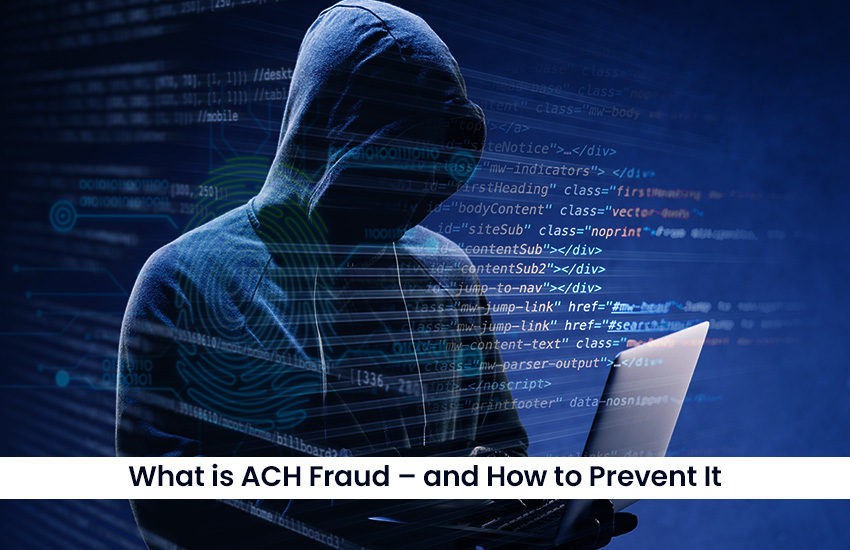
An employee receives their paycheck through direct deposit. One day, they get an email that looks like it’s from their bank. The email asks them to visit a website that appears legitimate but is actually designed to steal information. The employee enters their account and routing numbers on this fake website, giving the fraudster access to their bank account. This is ACH fraud, and it highlights the need for ACH fraud protection!
What is ACH Fraud?
ACH fraud involves unauthorized transfers from a bank account using the Automated Clearing House (ACH) network. ACH is a system for electronic fund transfers in the U.S., used by services like Venmo, PayPal, and Zelle to handle payments.
Unfortunately, ACH fraud is relatively easy to commit. Fraudsters only need two pieces of information: a checking account number and a bank routing number.
ACH Fraud Protection
Businesses and individuals use ach fraud detection software or financial fraud detection software to identify and prevent ACH fraud. This protection detects scams through transaction monitoring, device fingerprinting, and advanced technology like unsupervised machine learning.
Common Ways Hackers Commit ACH Fraud
Hackers use various methods to commit ACH fraud, such as tricking customers into making unauthorized transactions or using stolen credentials to withdraw funds. Their tactics are becoming more advanced and harder to detect. Here are some common ways fraudsters commit ACH fraud:
- ACH Kiting: Moving funds between accounts and financial institutions, often within a company and usually at the end of the year.
- ACH Lapping: Diverting a payment from a bank account and marking it as received, then using payments from other accounts to cover up the fraud.
- Insider Threats: An employee or insider uses legitimate credentials to steal money via ACH or passes information to another fraudster.
Phishing: Tricking an employee or authorized individual into providing their credentials, which are then used to impersonate the individual and withdraw funds.
How Common is ACH Fraud?
Currently, 93% of U.S. employees receive their paychecks through ACH. The use of digital payment apps that use ACH for transferring funds is also growing. As more people use ACH for payments, the number of criminals targeting this network also increases.
Can I dispute ACH Fraud Transactions?
Consumers can dispute a fraudulent ACH transaction within 60 days of receiving their financial statement listing the transaction or within 60 days of the settlement date. Reporting the fraud promptly is crucial for the consumer to be reimbursed by the bank.
Who is Liable for ACH Fraud?
Financial institutions are liable for ACH fraud and are responsible for compensating consumers for fraudulent ACH transactions. According to Federal Reserve Regulation E and the National Automated Clearing House Association (NACHA), consumers are not held liable for unauthorized ACH transfers unless they fail to report them within 60 days of receiving their bank statement showing the transaction. If reported within this timeframe, the bank must credit the consumer for the amount of the fraudulent transaction and can return the transaction to the originating institution.
ACH Fraud on Business Accounts
Unlike personal account holders who have up to 60 days to report ACH fraud, businesses have only 24 hours. This difference arises because businesses are not covered under Regulation E but rather under the Uniform Commercial Code (UCC). After 24 hours, the business becomes liable for the fraudulent transaction, not the bank. Therefore, it's crucial for businesses to promptly reconcile their accounts and regularly review online activities to detect ACH fraud early and minimize potential losses.
Can ACH Payments be Traced?
ACH payments can indeed be traced by banks, which can investigate suspected fraud by examining transaction data. This includes reviewing timestamps, location information, IP addresses, and other details to identify any anomalies that might indicate fraud. Each ACH transaction is associated with two Trace IDs—one for the destination and one for the source—both of which are listed on the consumer's bank statement under "transaction details."
Enhanced ACH Fraud Prevention with IBM Safer Payment
IBM Safer Payment, offered by Techzert, is an advanced Financial Fraud Detection Software designed to strengthen businesses against the rising threat of financial fraud. Our fraud detection & prevention platform includes strong ACH blocks that necessitate manual review and approval of transactions, ensuring heightened security measures. By leveraging advanced technologies such generative AI, analytics and simulation tools, IBM Safer Payment combines rule-based systems with machine learning models to proactively detect and mitigate ACH fraud and other forms of transaction fraud. This comprehensive approach enhances security while prioritizing a seamless customer experience.
Talk to Our Expert
Our Services
ISO 20022 (MT to MX) Adoption & Migration
FTM For Corporate Payment Services
IBM Cloud Park For Integration (CP4i)
